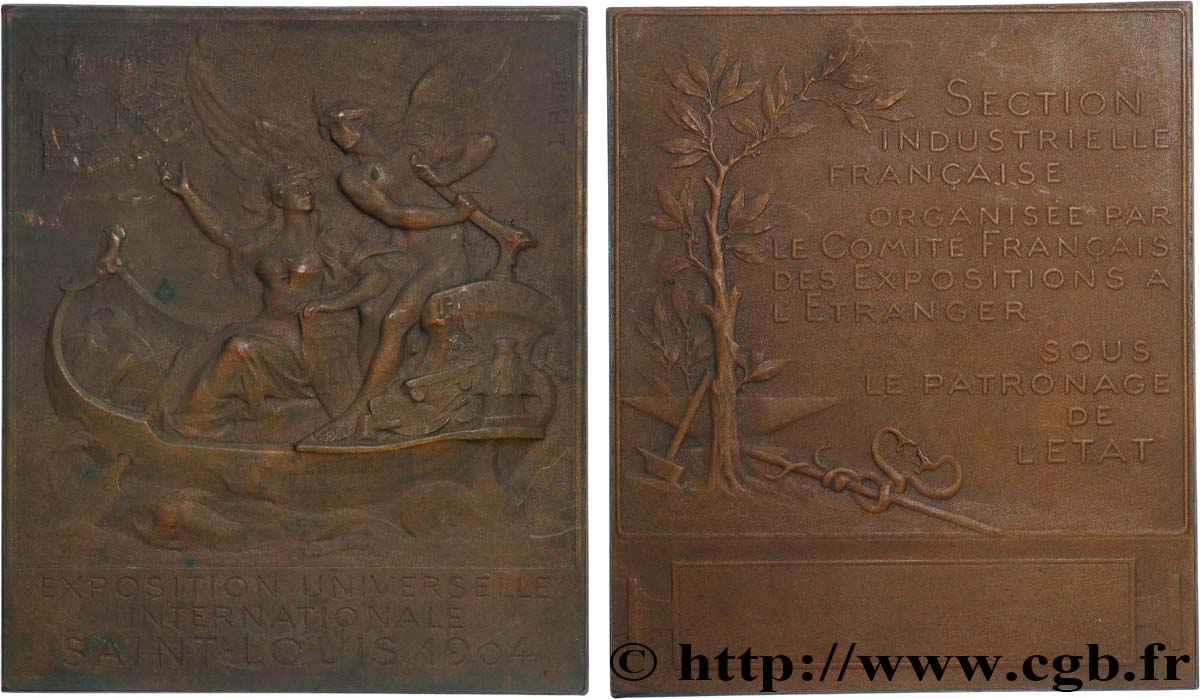正面
正面的文字 À L’EXERGUE : EXPOSITION UNIVERSELLE / INTERNATIONALE / SAINT-LOUIS 1904.
正面的说明书 Dans une barque inscrite PROGRES, un génie emmène la République française qui montre au loin les bâtiments de l'Exposition universelle de Saint-Louis. Signé : L. BOTTEE.
背面
背面的文字 SECTION / INDUSTRIELLE / FRANCAISE / ORGANISEE PAR / LE COMITE FRANCAIS / DES EXPOSITIONS / A L’ETRANGER / SOUS / LE PATRONAGE / DE / L’ETAT.
背面的说明书 Légende en 11 lignes à droite d’une enclume au pied d’un arbre, un marteau à gauche. Cartouche vierge à l’exergue.
评论
历史细节
UNITED STATES OF AMERICA
(since 1776)
The Americans, after the Second World War, were in a strong position: they had a monopoly on atomic weapons (until 1949), they only lost 300. 000 men during the conflict and their industry was strengthened. Under the presidency of the democrat Truman, they are opposed to the Soviet expansion and begins then the cold war concretized in 1949 by the signature of the treaty of the North Atlantic (NATO). Externally, from 1950 to 1953, President Truman engaged American forces in the Korean War while from 1953 to 1961, Eisenhower attempted to intervene in Middle Eastern politics.. In 1953, the death of Stalin allows a relative relaxation and the democratic presidents Kennedy (assassinated in 1963) and Johnson fight against poverty. The Cuban crisis broke out in 1962 then direct intervention in Vietnam took place until 1973: troops withdrew from Vietnam while the Watergate scandal forced Nixon to resign. In 1979, the hostage taking at the American embassy in Tehran shows the weakness of President Carter, quickly offset by the foreign policy offensive of the Republican Ronald Reagan. The latter also revived the economy and was triumphantly re-elected in 1984. Following him, George Bush leads a policy of firmness (military intervention in Panama or against Iraq to liberate Kuwait). In 1993, Democrat Bill Clinton was elected, giving priority to domestic politics..










 对产品描述纠错
对产品描述纠错 打印
打印 分享我的选择
分享我的选择 提问
提问 Consign / sell
Consign / sell
 产品介绍
产品介绍










